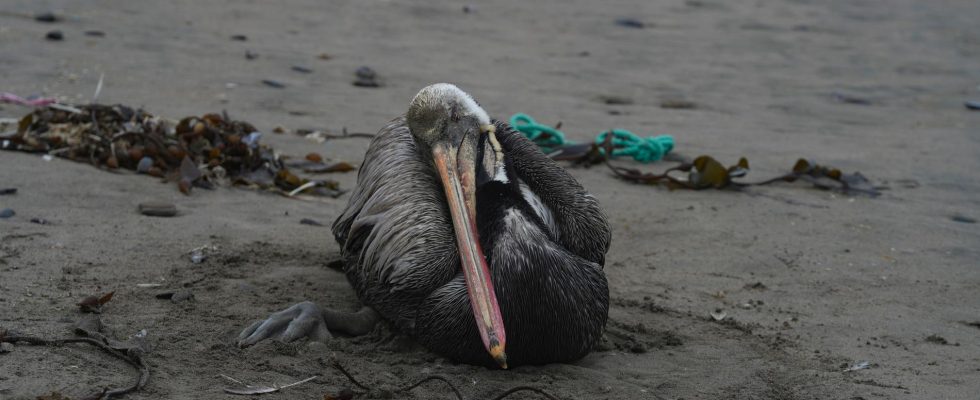1 / 3Photo: Guadalupe Pardo/AP/TT
More tigers, humpback whales and tuna. But mass death among seabirds due to bird flu. During the past year, some of the Earth’s wildlife species recovered. For others, 2023 meant continued decline.
It shows a compilation of a number of sources that TT has made.
Perhaps what attracted the most attention was the catastrophic effects of bird flu on many bird species.
The virus that causes the disease, H5N1, appeared in its latest, extremely contagious, form already at the end of 2020. It spread across the world in 2021 and 2022, reaching Antarctica in October 2023.
Millions of birds, it is unclear exactly how many, have died during a series of outbreaks. In the first place, it is species that breed in dense colonies that have been affected, mainly seabirds. Among the colonies of pelicans, soles and cormorants in the large colonies along the west coast of South America, mortality has been extremely high this year. In Peru, over 200,000 birds have died.
Scientists now fear that the virus will take hold in the huge colonies of penguins in Antarctica. This could have devastating effects.
Dead seagulls
Seabirds have also been affected in Sweden. Thousands of laughing gulls have been found dead all over the southern part of the country, and on the Karlsöarna off Gotland many herring pigs have died.
On the minus side, one can also note that no bright spot can be seen for the insects of the world. It has been known for a couple of decades that many insects have decreased in number in Europe and North America and now the same phenomenon has been observed in East Asia. A study in China has revealed that the number of insects that move annually from the southeastern parts of the continent to the northern parts and back has decreased by 7.6 percent since 2003.
Here at home, the crisis for herring and herring in the Baltic Sea has continued. Stocks are down to rock bottom levels due to overfishing. Nevertheless, fishing may continue this year, following a decision by the EU’s Council of Ministers.
Hundreds of tuna
But all is not dark – and a lot of good news is actually coming from the world’s oceans. The bluefin tuna appears to have recovered in many waters, including European ones, in recent years. This summer, for example, shoals of 200 individuals could be observed in Öresund. Tuna can weigh several hundred kilos and when they break the surface of the water it is a powerful sight.
Another piece of good news is that a record number of sea turtles came ashore in 2023 along the coasts of the United States to lay eggs. In Florida, 133,400 loggerhead nests and 76,500 green sea turtle nests were counted.
Scientists were also able to tell that humpback whales continue to increase in most parts of the oceans. The number is now believed to be at least 135,000 animals, and a record number of individuals were seen last year off eastern Australia.
Dramatic increase
On land, the most notable news is that the saiga antelope, a remnant of the Ice Age, has returned to the steppes of Kazakhstan after reaching a low in 2005 when only 39,000 individuals remained as an effect of heavy poaching. For a few years, protection has been strengthened and the number of saiga antelopes is now around two million – a dramatic and remarkable rise.
The world’s most popular animal, the tiger, has also increased. Seven years ago, there were barely 3,900 wild tigers in the world. Now the number is just over 5,800, a gratifying increase of 48 percent. On the other hand, almost all of these tigers, 77 percent are found in the Indian subcontinent – by far the largest tribe is in India, 3,925 tigers. In Southeast Asia, on the other hand, the number of disappearances is small, only about 700 tigers, and the decrease seems to continue. In Vietnam, Laos and Cambodia, the species is now considered extinct.
THE FACTS Animals 2023
Among species that have gone backwards in 2023 are the gray whale and the orangutan. Bird flu has caused most of the world’s seabirds to decline. Several fish, such as sturgeon and herring in the Baltic Sea, are also at low levels, as are several of the world’s oceans’ sharks.
Among the increasing species are the African rhinoceros, the tiger, the Iberian lynx and the saiga antelope. In the seas, things are going well for humpback whales, herring whales and sperm whales. The bluefin tuna, as well as several of the sea turtles, have also become more numerous.
Sources: Science, Global Tiger forum, IUCN, etc.
Read more
